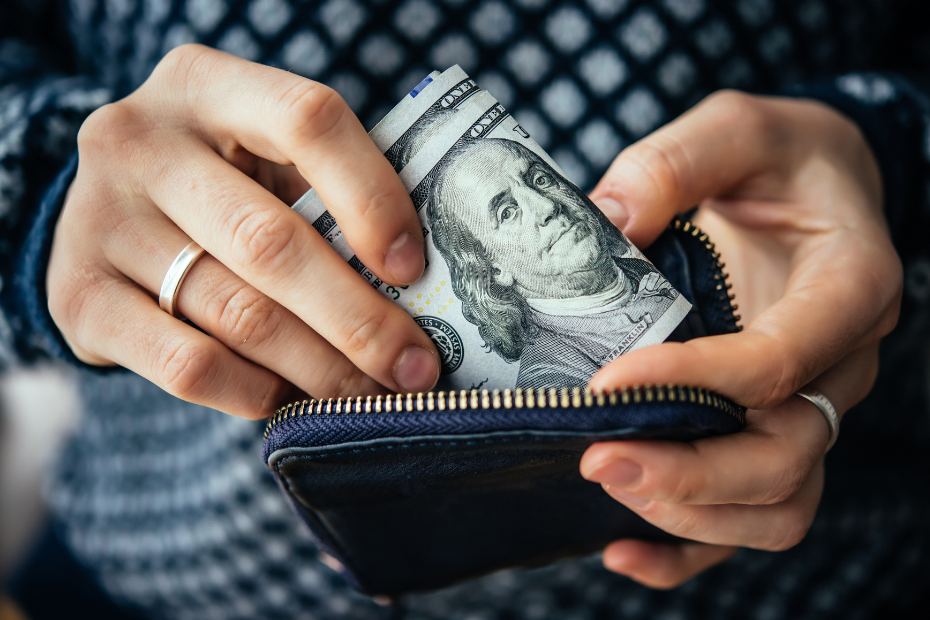Published July 20, 2023 • 4 Min Read
While there’s not much you can do about the value of the Canadian dollar, there are ways you can make the most of your U.S. / Canadian currency exchange. When shopping cross-border, avoid overpaying for your U.S. currency with these five tips.
1. Get cash before you go
One of the best ways to minimize currency exchange fees is to visit your bank before you leave home and get your U.S. currency in advance. Some Canadian banks offer the option to withdraw U.S. currency from many of their ATMs. It’s also easy to visit the branch, order U.S. currency online and have it delivered to your home.
2. Set up a USD bank account
Many Canadian banks offer the option to open a U.S. dollar bank account — which is easy if you already have a Canadian account at that institution. With a U.S. account, you can be flexible regarding when and how you buy the currency you need.
For instance, you might exchange a lump sum of cash when rates are low if you’re up for watching the market. Or, you could transfer cash between your Canadian and U.S. accounts regularly over time, which may average out the rates — this way, you won’t be caught paying more at the last minute if rates happen to be high when you’re ready to go.
3. Use a USD credit card
With a U.S. dollar credit card in your wallet, you can make purchases in U.S. funds and avoid daily currency fluctuations. With that U.S. dollar account, you can easily pay off your balance with U.S. currency.
For more potential savings, consider opening a U.S.-based credit card. This is a credit card issued by a U.S. bank. It will allow you to buy in U.S. dollars and save you the foreign transaction fees charged by Canadian-based credit cards (usually at a rate of 2.5 – 3 per cent for U.S. purchases).
Some banks with cross-border services allow Canadians to apply for a U.S.-based card using their Canadian address and Canadian credit history.
4. Seek out low rates
If you didn’t convert all the cash you needed before you left for your shopping trip, there’s no need to worry. But there’s no need to overpay for your U.S. cash either.
While you’re in the States, it’s a good idea to look up the current rate from a reliable source, such as the Bank of Canada. Then, compare these rates to those offered at banks or currency exchange offices nearby to see which offers competitive options.
Tip: Airports and exchange offices in tourist areas may have unfavourable exchange rates due to their locations. If you can wait, you may make a better exchange.
5. Watch out for extra fees
Remember, foreign transaction fees are just one of the possible fees you could get charged while exchanging cash. Foreign ATM fees and network access fees at U.S. ATMs might eat away at your shopping budget, as could currency conversion fees that may be tacked on at exchange offices.
While some exchange fees may be inevitable, being aware of them can help you minimize the price of exchange and help you seek out options that are less costly.
The U.S. is a great spot to find hot deals, unique items and favourite products that aren’t available on this side of the border. With a plan-ahead approach to currency conversion, you can keep your dollars working hard for you while you shop!
Diane Amato is a Toronto-based freelance writer who loves to talk about finances, travel and technology.
This article is intended as general information only and is not to be relied upon as constituting legal, financial or other professional advice. A professional advisor should be consulted regarding your specific situation. Information presented is believed to be factual and up-to-date but we do not guarantee its accuracy and it should not be regarded as a complete analysis of the subjects discussed. All expressions of opinion reflect the judgment of the authors as of the date of publication and are subject to change. No endorsement of any third parties or their advice, opinions, information, products or services is expressly given or implied by Royal Bank of Canada or any of its affiliates.
Any information, opinions or views provided in this document, including hyperlinks to the RBC Direct Investing Inc. website or the websites of its affiliates or third parties, are for your general information only, and are not intended to provide legal, investment, financial, accounting, tax or other professional advice. While information presented is believed to be factual and current, its accuracy is not guaranteed and it should not be regarded as a complete analysis of the subjects discussed. All expressions of opinion reflect the judgment of the author(s) as of the date of publication and are subject to change. No endorsement of any third parties or their advice, opinions, information, products or services is expressly given or implied by RBC Direct Investing Inc. or its affiliates. You should consult with your advisor before taking any action based upon the information contained in this document.
Furthermore, the products, services and securities referred to in this publication are only available in Canada and other jurisdictions where they may be legally offered for sale. Information available on the RBC Direct Investing website is intended for access by residents of Canada only, and should not be accessed from any jurisdiction outside Canada.
Share This Article






